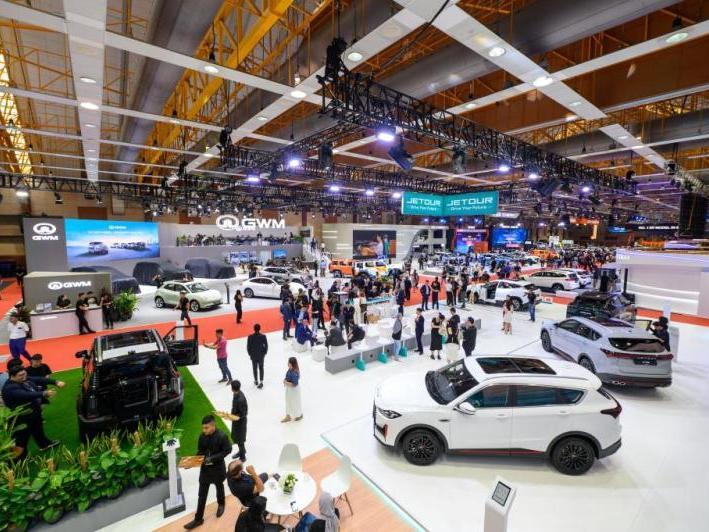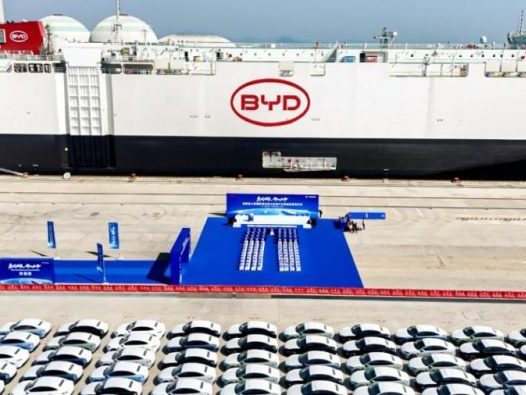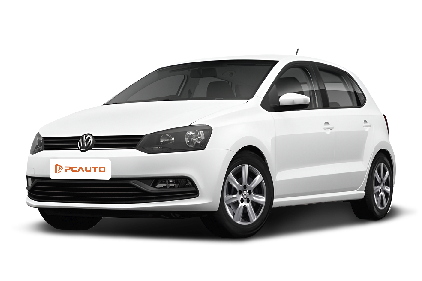Q
Why is Polo costly?
There are a few key reasons why the Volkswagen Polo carries a higher price tag in Malaysia. First off, there's the brand premium – as a global model from Germany's Volkswagen, the Polo has built up strong recognition in the local market thanks to its reputation for solid build quality and brand image. Then there's the import duty factor; Malaysia slaps pretty hefty taxes on fully imported vehicles, and that gets passed straight on to the sticker price.
On top of that, the Polo packs in quite a bit of advanced tech – things like the MQB platform, efficient turbocharged engines, and a comprehensive suite of active and passive safety features – all of which add to the production costs. Interior-wise, too, the Polo doesn't skimp on materials or fit and finish, living up to that typically German standard of refinement.
For Malaysian buyers, the Polo also holds its value relatively well, which actually makes it more cost-effective over the long haul. It's worth noting that while Japanese rivals like the Honda Jazz might come in cheaper, they do differ from the Polo when it comes to driving dynamics and high-speed stability – something consumers really need to weigh up based on their own priorities.
These days, the Malaysian small car market is more crowded than ever, with plenty of local offerings and ASEAN tariff-exempt models to choose from. But the Polo still manages to carve out its own unique spot, thanks to its European roots and well-rounded performance.
Special Disclaimer: This content is published by users and does not represent the views or position of PCauto.
Related Q&A
Q
What is the fuel tank capacity of the 2020 Polo?
The 2020 Volkswagen Polo comes with a 40-liter fuel tank, a design that strikes a nice balance between daily commuting and longer drives – perfect for Malaysian drivers who split their time between city hops and interstate trips. As a compact hatchback, the Polo already boasts solid fuel efficiency, and with that 40-liter tank, you're looking at a range of roughly 500 to 600 kilometers, though your actual mileage will vary depending on driving conditions and which engine variant you go for.
Of course, tank size is just one part of the range equation. To really get the most out of every drop, owners should keep an eye on things like tire pressure and how often they blast the AC – little maintenance habits that can make a difference at the pump. With Malaysia's hot weather, it's also a good idea to regularly check the fuel system's seals to prevent evaporation losses when temperatures soar.
For the most accurate fuel consumption figures, your best bets are the certified specs from Malaysia's Road Transport Department (JPJ) or the localized test data available on Volkswagen Malaysia's official website.
Q
What safety ratings did the 2020 Polo receive?
The 2020 Volkswagen Polo has earned a 5-star safety rating from Euro NCAP, Europe's leading crash test authority. This top score reflects its strong performance across all key areas: adult occupant protection, child occupant protection, pedestrian protection, and safety assist systems. It particularly excelled in adult occupant safety with an impressive 96% score, while its safety assist systems also scored a solid 76% – clear indicators of its robust active and passive safety credentials.
For Malaysian buyers, this rating positions the Polo as a serious contender in its segment, especially when it comes to safety. The car comes loaded with advanced safety features like multiple airbags, Electronic Stability Control (ESC), and Autonomous Emergency Braking (AEB) – all working together to keep drivers and passengers well-protected on the road.
It’s worth remembering that Euro NCAP’s testing is notoriously rigorous, so a 5-star rating is no easy feat and typically signals a standout performer in its class. This should definitely be high on your checklist when car shopping. That said, it’s also smart to consider Malaysia’s unique road conditions and your own driving habits to make sure the Polo’s safety setup aligns perfectly with your needs.
Q
What's the fuel economy of a 2020 Polo?
The 2020 Volkswagen Polo really shines when it comes to fuel economy in the Malaysian market. Let me break it down for you: the 1.6L MPI naturally aspirated engine paired with the 6-speed auto 'box returns around 6.5L/100km in the city, drops to roughly 5.0L/100km on the highway, and averages out at about 5.7L/100km. Of course, your actual mileage will vary depending on how you drive, the roads you're on, and how well you keep up with maintenance.
As a small hatchback, the Polo's fuel efficiency is pretty competitive in its class, and that's thanks to Volkswagen's engine tech and some smart lightweighting in the body design. For Malaysian buyers, picking the Polo means you get that solid German driving feel and save at the pump – especially handy in stop-start city traffic, where its efficiency really stands out.
Quick tip though: you can squeeze even more out of it by driving smoothly (easy on the gas, avoid harsh braking) and keeping up with regular service like oil changes and air filter replacements. Works for any car, really, and helps keep your running costs down.
Q
Do 2020 polos have CarPlay?
The 2020 Volkswagen Polo does offer Apple CarPlay functionality on select trims, though availability depends on the specific model and equipment level. In the Malaysian market, higher-spec variants typically come equipped with either MIB2 or MIB3 infotainment systems that support CarPlay. This lets you hook up your iPhone via USB to access navigation, music streaming, and hands-free calling features. Entry-level models, however, might require this as an optional extra or miss out entirely.
If you're a Polo owner wanting to confirm your car's setup, your best bets are checking the original owner's manual or reaching out to an authorized Malaysian Volkswagen dealer with your VIN for precise details. It's worth remembering that CarPlay is just one smart connectivity option – Android users can enjoy similar functionality through Android Auto. Both require a reliable original equipment (OE) USB cable for stable operation.
In recent years, as local consumer demand for smarter cockpits has grown, more new cars now come standard with wireless CarPlay and even wireless charging. If you're in the market for a used Polo, it's advisable to prioritize versions with the original factory head unit to ensure compatibility. Also, make sure the system software is updated to the latest version to avoid any connection issues.
Q
How to open bonnet on 2020 polo?
To open the hood on a 2020 Volkswagen Polo, start by sitting in the driver’s seat. Look around the driver’s footwell area for a lever marked with a hood icon—usually it’s down by the left side of the steering wheel or along the lower edge of the dashboard. Pull the lever outward firmly, and you’ll hear a noticeable click as the first hood latch releases. Next, head to the front of the car. Slide your fingers into the gap at the front - center of the hood, slightly to the right of the center. You’ll feel a secondary safety catch there—flip it up or push it sideways (the direction depends on the specific design) while gently lifting the hood. If the hood feels heavy once open, prop it up with the support rod to keep it secure. For Polo owners here in Malaysia, with our hot and humid weather, it’s smart to make checking under the hood a regular habit. Keep an eye on coolant, engine oil, and brake fluid levels, as they can take a hit in this climate. Also, clear out any leaves or debris that build up; they can clog drain holes and cause issues down the line. These simple checks go a long way in keeping your car running strong. If you run into any snags or want more tailored advice for local conditions, flip through your owner’s manual or swing by a Volkswagen Malaysia authorized service center. Their technicians know the ins and outs of these cars and can give you tips specific to our roads and weather.
Q
What MK is a 2020 Polo?
The 2020 Volkswagen Polo is part of the sixth generation, codenamed MK6. This generation first hit the scene back in 2017, and the 2020 model is its mid-cycle refresh. It got a sportier exterior makeover and a more tech-forward cabin, packing VW's latest MIB infotainment system with Apple CarPlay and Android Auto – definitely a hit with young Malaysian buyers. Under the hood, the 2020 Polo offers a solid lineup: think 1.0-liter three-cylinder turbo and 1.5-liter four-cylinder turbo engines. They strike a nice balance between fuel efficiency and pep, perfect for Malaysia's urban jungle. Safety got a boost too on this sixth-gen Polo, with standard driver assists like automatic emergency braking and lane-keeping assist, making it that much safer on the road. What's really cool is that the Polo has always been a big favorite in Malaysia. Its compact size and nimble handling make zipping through crowded city streets a breeze, and that good old German build quality has earned it a ton of trust from buyers. So if you're in the market for an affordable, reliable hatchback, the 2020 Polo is definitely one to check out.
Q
What is the fuel consumption of the 2020 Polo?
The 2020 Volkswagen Polo's fuel economy in the Malaysian market varies depending on engine specs and driving conditions. The 1.6L naturally aspirated variant typically sips around 6.5-7.2L/100km in city driving, dropping to 5.0-5.8L/100km on highway cruises. Opt for the 1.0L TSI turbo engine, though, and you'll see even better efficiency – roughly 5.8-6.5L/100km around town and 4.5-5.2L/100km out on the open road. Keep in mind, real-world figures can fluctuate based on your driving style, road conditions, and how well you maintain the car.
For Malaysian buyers eyeing a compact car, it's not just about the official fuel stats. You've got to factor in our sweltering climate straining the AC and those stop-start traffic jams taking a toll on efficiency. My tip? Regularly check and replace the air filter, and keep those tires properly inflated – simple steps that go a long way in keeping fuel economy in check.
Volkswagen's EA211 engine series under the Polo's hood has also been tweaked to handle tropical climates, which is a plus. If you go for the DSG dual-clutch transmission model, that'll further smooth out power delivery and help with efficiency too. And if city commuting is your main grind, it's worth checking out the Energy Commission's (ST) EEV (Energy Efficient Vehicle) certification list as a handy reference when picking your ride.
Q
How to open petrol cap on VW Polo 2020?
To open the fuel filler cap on a 2020 Volkswagen Polo, first make sure the vehicle is unlocked. Then, press the right edge of the fuel cap – it should pop open automatically. After that, just twist the inner cap counterclockwise and you’re ready to refuel. A quick heads-up: some models lock the fuel cap when the car is locked, so if it won’t budge, double-check that the vehicle is unlocked first.
For our friends in Malaysia, the hot and rainy climate can take a toll on the fuel cap’s rubber seal over time. It’s a good idea to clean it regularly and hit it with a bit of silicone-based lubricant to keep it working smoothly.
Now, fuel cap designs can vary quite a bit between brands. Japanese cars often go for a pull-cord release under the dash, while European models like the Polo favor this push-to-open style. These differences usually come down to body structure safety and overall aesthetics.
If you ever struggle to open the fuel cap, resist the urge to force it open – you don’t want to break the locking mechanism. Your owner’s manual should have troubleshooting tips, or just give your authorized service center a call. And before you start pumping, take a second to check the label near the fuel cap for the recommended fuel grade – you don’t want to put the wrong stuff in there.
Q
How does the 2020 Polo compare to older models?
The 2020 Volkswagen Polo gets a solid upgrade over the previous generation, with a clear focus on boosting practicality and tech features for the Malaysian market. Styling-wise, the 2020 model rocks sharper lines, LED headlamps, and a bigger grille, giving it a much more youthful and sporty vibe compared to the older version.
The interior sees the most noticeable improvements. A 6.5-inch touchscreen comes standard (upgraded to 8 inches on higher trims) with Apple CarPlay/Android Auto support, a big step up from the old-school button-heavy setups in the previous Polo. Safety gets a boost too – ESC and multi-collision prevention are now standard across the range, features that were missing on some older models.
Under the hood, the Malaysian-spec 2020 Polo sticks with the reliable 1.6L MPI engine but with better fuel economy – city driving returns around 7% lower fuel consumption than before. Thanks to the MQB platform, the wheelbase is stretched by 94mm, translating to way more legroom in the back. Younger buyers might also dig the new optional Beats sound system.
VW hasn't forgotten about Malaysia's tropical climate either – the 2020 Polo gets better aircon cooling and UV-protected glass. If you're hunting for a used Polo, the 2014-2018 models still offer good value, but the 2020 version's edge in active safety and connectivity tech makes it the way to go for anyone wanting a more modern driving experience.
Q
What engine is in the 2020 Polo?
The 2020 Volkswagen Polo in the Malaysian market primarily comes with a 1.0-liter three-cylinder turbocharged petrol engine, offered in two tunes: the entry-level 95hp TSI paired with a 5-speed manual gearbox, and the higher-output 115hp version mated to a 7-speed DSG dual-clutch transmission. Both engines feature direct fuel injection, striking a balance between fuel efficiency and performance, with a combined fuel consumption of approximately 4.7-5.0L/100km.
Notably, this 1.0 TSI small-displacement turbo engine is a standout from Volkswagen Group's EA211 series. It uses an aluminum cylinder block to reduce weight and is equipped with a variable valve timing system, delivering peak torque of 175-200Nm at low revs – making it perfectly suited for Malaysian city driving conditions.
Among its competitors, a similar small-displacement turbo strategy is adopted by the Honda Jazz RS (1.5L turbo) and the Toyota Yaris (1.5L naturally aspirated). However, the Polo's TSI engine showcases German engineering prowess in terms of torque delivery and transmission pairing. Its 7-speed DSG gearbox still leads the class in shift speed, though consumers should note the need for regular maintenance on the dual-clutch transmission to ensure long-term reliability.
Popular Cars
Model Year
Car Compare
Car Photo
Latest Q&A
Q
Is the 1.5 L 4 cylinder?
Yes, a 1.5L engine is typically a 4-cylinder setup—the most common configuration for small to mid-sized displacements. This layout strikes a solid balance between fuel efficiency and power output, making it ideal for daily commuting and family use. Four-cylinder engines are relatively simple in design, cheaper to maintain, and benefit from proven technology that delivers smooth operation. You'll find this configuration widely used by mainstream brands like Honda, Toyota, and Mazda. While there are some 1.5L 3-cylinder options out there, the 4-cylinder remains the go-to choice, especially in models prioritizing durability and refinement. If you're shopping for a 1.5L-powered car, pay attention to specific tech features—turbocharging, direct injection, etc.—as these can significantly impact real-world driving dynamics and fuel economy.
Q
What is the displacement of a V8 engine?
The displacement of a V8 engine typically ranges from 4.0 to 6.2 liters, depending on the vehicle and its purpose. For example, high-performance sports cars often pack a 5.0-liter or larger V8, while trucks and SUVs usually stick with something between 4.3 and 5.7 liters. Known for its brute power and smooth operation, the V8 is a go-to for acceleration and towing—though its thirst for fuel is something buyers always weigh up.
These days, turbocharging has changed the game. Smaller-displacement V8s (like a twin-turbo 4.0L) can now deliver big-block performance with slightly better efficiency. And let’s not forget the sound—few things beat the roar of a tuned V8 exhaust, a big reason why enthusiasts love ‘em.
If you’re into V8s, keep an eye on local used car listings or auto shows—you’ll often spot some gems there.
Q
What is the difference between 1l and 1.2 L engine?
The key difference between 1-liter (1L) and 1.2-liter (1.2L) engines comes down to displacement—the total volume of all cylinders in an engine, measured in liters. Generally, a larger displacement means more power and torque, so a 1.2L engine will likely feel stronger during acceleration, highway driving, or when tackling hills with a load. That said, it’ll also drink a bit more fuel compared to the 1L.
The 1L, being smaller, prioritizes fuel efficiency, making it a smart pick for city commuting or everyday runs. On the flip side, the 1.2L’s extra performance often means higher manufacturing costs, which might bump up the car’s price tag. Plus, the 1L’s compact size fits better in smaller or budget-friendly models.
Your choice really hinges on driving needs: go for the 1.2L if you regularly hit the highway or want more grunt, but stick with the 1L if you’re mostly urban-bound and watching fuel bills. Oh, and don’t forget—tech like turbocharging or variable valve timing can squeeze near-equal performance from smaller engines these days, so specs alone don’t tell the full story. Always check how the engine’s tuned.
Q
What does 5.7 liter engine mean?
A 5.7-liter engine refers to a total displacement of 5.7 liters, meaning all cylinders combine for a total working volume of 5,700 cubic centimeters. Generally, a larger displacement allows the engine to take in more air and fuel, delivering stronger power and torque—making it ideal for performance-oriented vehicles or those built for heavy-duty work, like pickup trucks, full-size SUVs, or muscle cars.
In the local market, you’ll often find big-displacement engines in American-branded vehicles. These engines excel at high-speed cruising or towing heavy loads, though they do come with higher fuel consumption and increased running costs.
Thanks to advancing technology, many automakers now use turbocharging or hybrid systems to help smaller engines deliver power comparable to older, larger naturally aspirated units—like how some modern 2.0L turbocharged engines can match the performance of older V6 engines while being far more fuel-efficient.
If fuel economy is a priority, a smaller turbocharged or hybrid model might be the better choice. But if you value the smooth, raw power of a classic big-block, a 5.7-liter engine remains a timeless option.
Q
What liter engine is a V6?
The displacement of a V6 engine isn't set in stone—it typically ranges between 2.5 and 4.0 liters, depending on the vehicle's design and purpose. For example, a family sedan might pack a 2.5L or 3.0L V6, while performance cars or pickups could go for 3.5L or larger. Displacement directly impacts power output and fuel economy: bigger usually means stronger, but thirstier too.
Named for its six cylinders arranged in a V-shape, the V6 strikes a sweet spot—delivering smoother operation and better balance in a compact package compared to four-cylinder engines, while being more fuel-efficient than V8s. That's why it's a popular choice for midsize sedans and SUVs.
These days, with turbocharging becoming commonplace, smaller-displacement V6 turbos can match the punch of older, bigger engines while sipping less fuel. Choosing one? Think about your daily needs. A 2.5L works fine for city commutes, but if you're frequently hitting the highway or towing, step up to 3.0L or above.
View MoreRelated News

Because of lack of funds to upgrade the factory, Volkswagen postponed the release of ID.Golf and ID.Roc
JamesSep 17, 2025

Volkswagen Locks Vehicle Horsepower, Unlocks Full Power via Subscription
JohnAug 19, 2025

Summarizing the 2025 Malaysia Auto Show, a large number of new cars were launched in Malaysia this year.
MichaelMay 12, 2025

Volkswagen ID.Buzz's Bizarre Recall: Third-Row Seats Too Wide, Need to Be Modified
Kevin WongMay 8, 2025

BYD Sets Global Sales Target of 5.5 Million Units for 2025
RobertMar 26, 2025
View More

















Pros
Cons